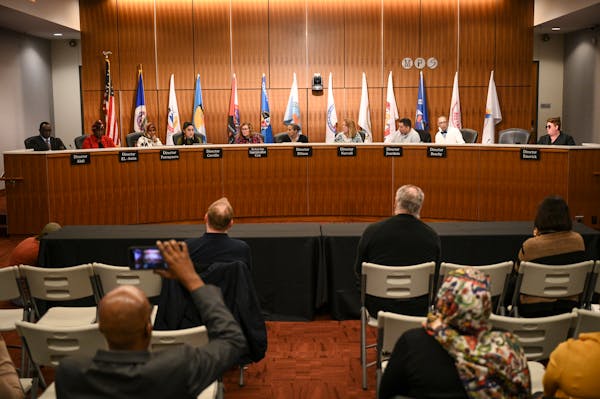The Minneapolis Public Schools board on Tuesday unanimously approved next school year's $979 million budget, which is balanced using federal pandemic relief dollars, new revenue from the state and the district's reserve funds.
While those funding sources solved the budgeting puzzle for the coming school year, administrators warned that tough decisions are ahead because expenses continue to outpace revenue. And the last wave of tens of millions in federal relief funds sunset in fall 2024.
"I want to be clear with the board and the public that even with our additional funding from the state, MPS still has work to do to address our ongoing cost structures that are over and above what our revenues bring in," interim Superintendent Rochelle Cox said at Tuesday's meeting. "Each year we have been able to find a way to address this gap and produce a balanced budget, as we have done in this coming year largely with federal COVID-relief funding."
Though fund balances have remained at levels that meet board policy and the district's bond rating is strong, Cox said, "It is now time to address ongoing financial difficulties and gain control over our cost structures, which I'm confident we will do in partnership with the board and the community."
Next year's budget funds hundreds of new positions, including a part-time librarian for every school and teachers and associate educators to staff more than 100 "intervention triads" to support students who are struggling academically.
District leaders used a new "priority-based" model of budgeting this year, requiring each department to present how its expenses align with goals in the district's strategic plan. School allocations remain largely the same as this year, adjusted only for enrollment changes.
Cox said Tuesday that enrollment stayed mostly stable from the start of the school year to the end.
Minneapolis Public Schools enrollment hovers around 28,000 and the district estimates that number will continue to drop by 5,000 students over the next five years. Since state funding is doled out per student, fewer students means fewer dollars for the district.
The state's new education finance bill boosts funding to school districts by tying future funding increases to the rate of inflation and helping to cover the rising cost of special education services and English language learner services.
For Minneapolis schools, that means $31.7 million in additional state aid next year. Once that is factored in, the district's projected operating budget gap for next year sits at $1.4 million, which will be covered by reserve funds.
The budget also includes using $132 million in bond proceeds for capital projects, including $48 million from previous years to cover a deficit between revenue and expenditures in the capital fund.
Ibrahima Diop, the district's senior officer of finance and operations, said that in his eight years in the district, the budgeting process has always begun with a projected deficit between district revenues and expenditures. And he's repeatedly discussed the approaching fiscal cliff created by expiring pandemic relief funds.
The district's own five-year projection — published before it was clear new money would be coming from the state — showed that without new revenue or major cost changes, the district would be in the red by the 2024-2025 school year.
"We will be developing plans and strategies so that we can navigate the fiscal cliff and be in stable standing after the federal dollars are gone," Diop said. "Yes, that means a reduction. We cannot do it without that. ... We've been talking about it for years — that there are incongruencies in the way we operate and we have to take the courage that is required to do what is right for Minneapolis Public Schools."
At Tuesday's meeting, several board members, including Ira Jourdain, Joyner Emerick and Kim Ellison said they are proud of the approved budget.
Board Chair Sharon El-Amin agreed: "Recognizing that we do have some very difficult fiscal decisions in the coming years, this budget invests the resources we have now to move the dial on student achievement, which is our collective priority."

Wolves vs. Nuggets series updates: Times for first four games set
Medical examiner identifies pedestrian hit by vehicle and killed in Bloomington
Souhan: A sausage? A knee surgery? Minnesota sports has gone mad

